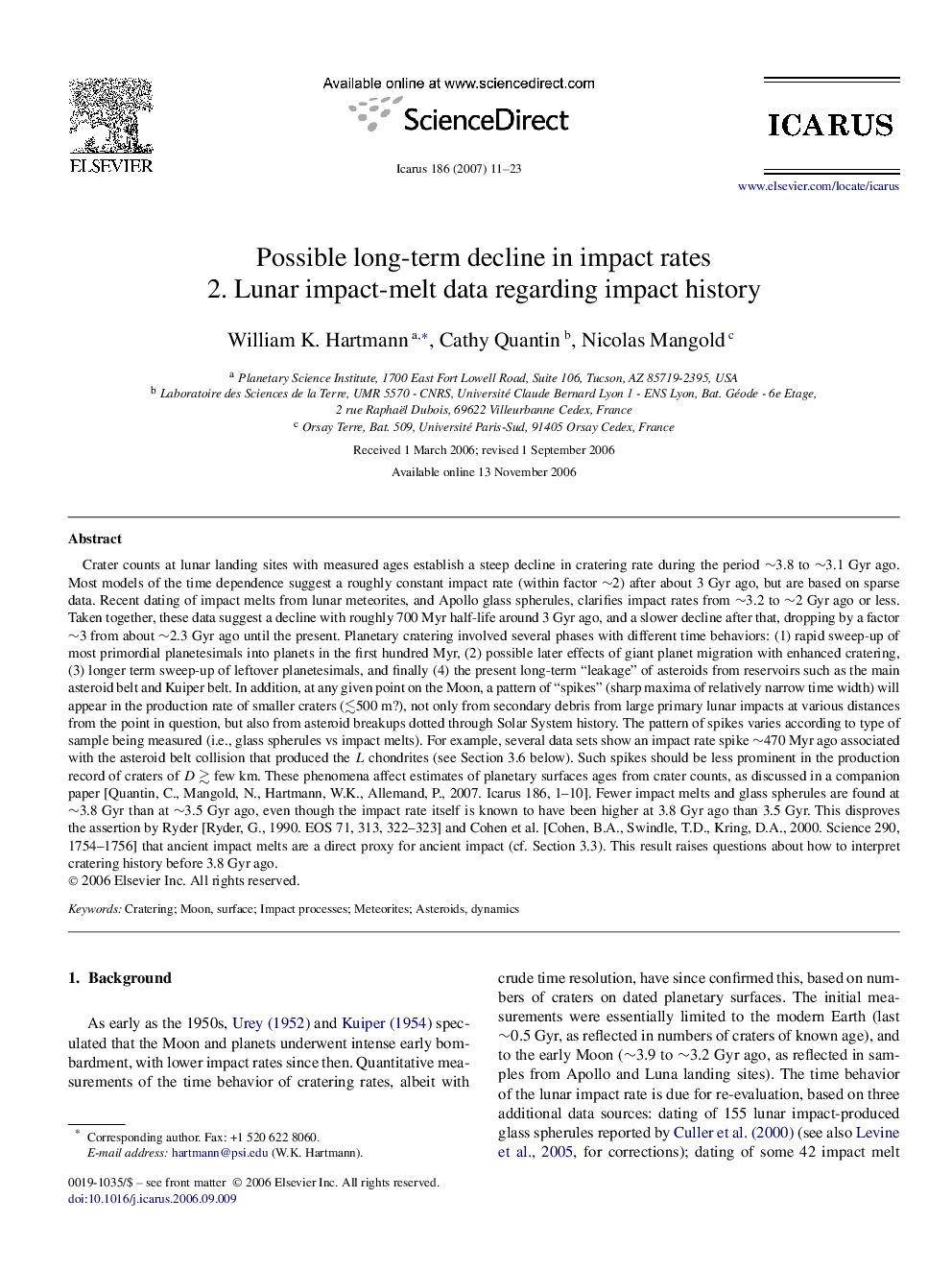| کد مقاله | کد نشریه | سال انتشار | مقاله انگلیسی | نسخه تمام متن |
|---|---|---|---|---|
| 1775765 | 1021206 | 2007 | 13 صفحه PDF | دانلود رایگان |

Crater counts at lunar landing sites with measured ages establish a steep decline in cratering rate during the period ∼3.8 to ∼3.1 Gyr ago. Most models of the time dependence suggest a roughly constant impact rate (within factor ∼2) after about 3 Gyr ago, but are based on sparse data. Recent dating of impact melts from lunar meteorites, and Apollo glass spherules, clarifies impact rates from ∼3.2 to ∼2 Gyr ago or less. Taken together, these data suggest a decline with roughly 700 Myr half-life around 3 Gyr ago, and a slower decline after that, dropping by a factor ∼3 from about ∼2.3 Gyr ago until the present. Planetary cratering involved several phases with different time behaviors: (1) rapid sweep-up of most primordial planetesimals into planets in the first hundred Myr, (2) possible later effects of giant planet migration with enhanced cratering, (3) longer term sweep-up of leftover planetesimals, and finally (4) the present long-term “leakage” of asteroids from reservoirs such as the main asteroid belt and Kuiper belt. In addition, at any given point on the Moon, a pattern of “spikes” (sharp maxima of relatively narrow time width) will appear in the production rate of smaller craters (≲500 m?), not only from secondary debris from large primary lunar impacts at various distances from the point in question, but also from asteroid breakups dotted through Solar System history. The pattern of spikes varies according to type of sample being measured (i.e., glass spherules vs impact melts). For example, several data sets show an impact rate spike ∼470 Myr ago associated with the asteroid belt collision that produced the L chondrites (see Section 3.6 below). Such spikes should be less prominent in the production record of craters of D≳ few km. These phenomena affect estimates of planetary surfaces ages from crater counts, as discussed in a companion paper [Quantin, C., Mangold, N., Hartmann, W.K., Allemand, P., 2007. Icarus 186, 1–10]. Fewer impact melts and glass spherules are found at ∼3.8 Gyr than at ∼3.5 Gyr ago, even though the impact rate itself is known to have been higher at 3.8 Gyr ago than 3.5 Gyr. This disproves the assertion by Ryder [Ryder, G., 1990. EOS 71, 313, 322–323] and Cohen et al. [Cohen, B.A., Swindle, T.D., Kring, D.A., 2000. Science 290, 1754–1756] that ancient impact melts are a direct proxy for ancient impact (cf. Section 3.3). This result raises questions about how to interpret cratering history before 3.8 Gyr ago.
Journal: Icarus - Volume 186, Issue 1, January 2007, Pages 11–23